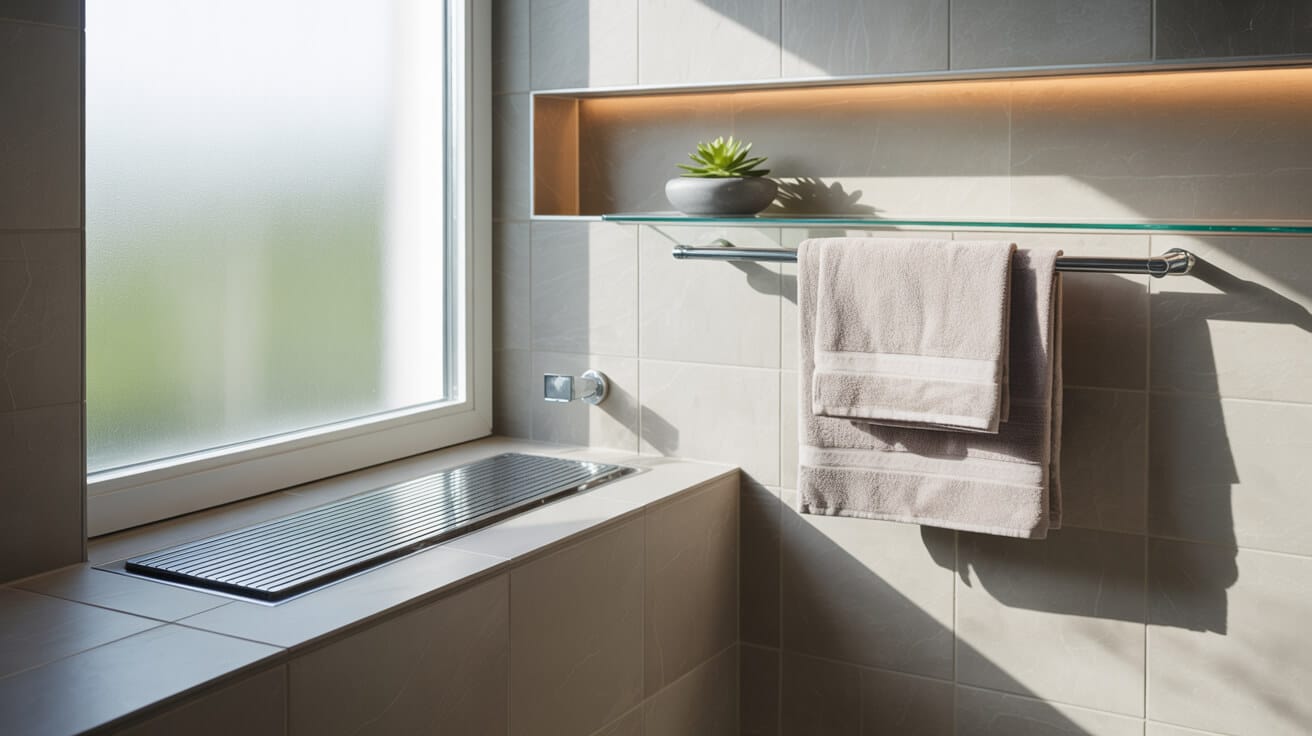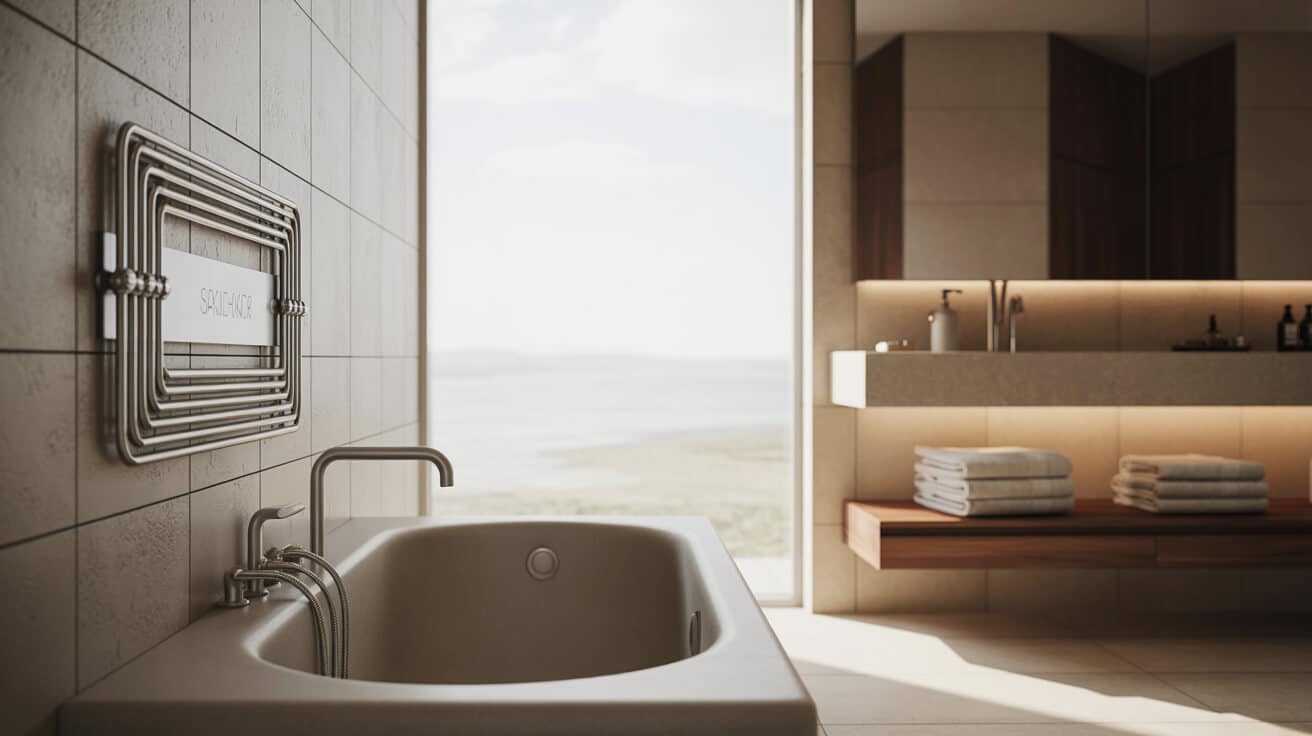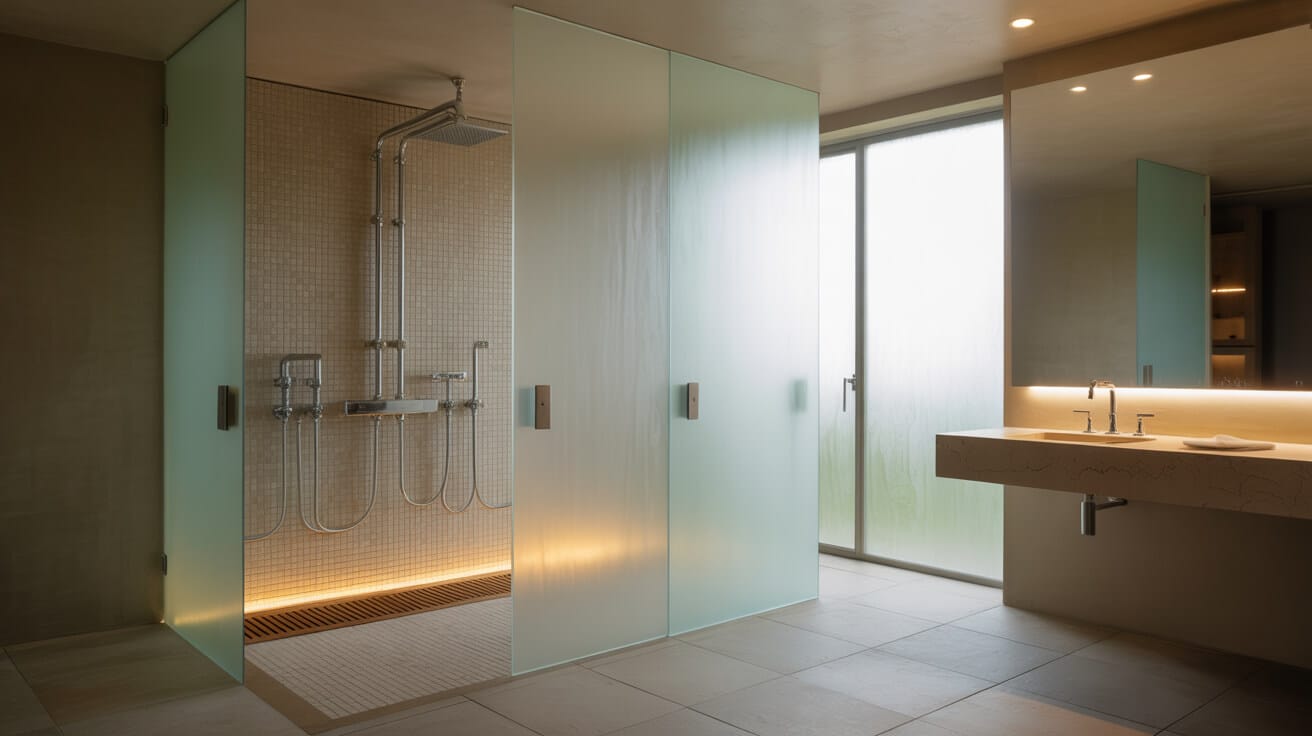Solar thermal water heating leverages the physics of solar irradiance, fluid transfer, and controlled heat exchange. The collector surfaces, often occupying prominent roof positions, operate as the gateway for thermal energy entering a property. When installed by professional, accredited engineers such as those at Plumbers 4U, the resulting systems fulfil precise energy-saving functions, help meet national and local mandates for sustainability, and often pave the way for access to grants or regulatory incentives. Customers seeking to enhance energy efficiency, raise property value, or comply with emerging standards increasingly pursue solar thermal installations for their proven reliability, system longevity, and measurable reduction in traditional fuel requirements.
Etymology or Name Origin
The phrase “solar thermal” draws from Latin “solaris” (sun) and Greek “thermos” (heat), signifying technologies that exploit sunlight to generate and transfer heat. Industry literature further segments by system type—such as “active” or “passive” solar water heating, “DHW” (domestic hot water) solar, or “solar-preheat” systems—each signalling variations in mechanical configuration, building service integration, and climate adaptation. Within regulatory, engineering, and commercial documentation, the term is used with precision to distinguish heat-producing solar from electricity-generating photovoltaic (PV) technologies.
Overview / Context
Harnessing solar radiation for domestic and commercial water heating combines principles drawn from architecture, thermodynamics, and building services engineering. While photovoltaics convert sunlight to electricity, solar thermal installations use purpose-engineered absorber surfaces, fluids, and exchangers to capture, transfer, and store heat. The presence of these technologies within property portfolios answers not just to energy cost control but to broader mandates—regulatory compliance, EPC scoring, decarbonization, and, in both public and private sectors, demonstrable progress toward Net Zero objectives.
Background
Civilizations have exploited the sun’s warmth for millennia, but technical harnessing began with early batch collectors and simple storage tanks. Modern innovations—ranging from laser-welded absorber plates to vacuum-insulated tubes and intelligent controllers—allow for systems to be adapted to a variety of architectural forms, climates, and usage profiles.
Sector Context
Contemporary building codes increasingly recognise and incentivize solar thermal adoption. Professional plumbing and heating providers such as Plumbers 4U ensure that projects achieve technical and legislative conformity: our services extend from project planning and survey through to handover, documentation, and ongoing aftercare. Your property benefits through not only energy savings but also improved EPC grades and a future-proofed regulatory position.
History
Origins
The earliest applications of solar water heating date to the late 19th century, with patents in the United States and Europe for blackened tank systems exposed to sunlight, delivering limited but meaningful hot water for domestic use. The pioneering market in California and Mediterranean regions was driven by energy cost, climate suitability, and availability of basic plumbing.
Technological Progression
Development of selective coatings, heat pipe technology, and non-return valve integration transformed the operational window and reliability of systems through the 20th century. The oil crises of the 1970s catalysed significant research, leading to glazed collector panels, improved insulation, and large-scale institutional uptake in the 1980s. By the 21st century, evacuated tube collectors with superior winter yield, computer-controlled pumps, and freeze-protection fluids had become standard, particularly in northern Europe.
Market and Regulatory Milestones
With the introduction of Energy Performance Certificates (EPCs), Minimum Energy Efficiency Standards (MEES), and nationwide renewable heat incentive programmes, solar thermal moved from fringe to mainstream, particularly in landlord, housing association, and new-build developer segments. Regulatory frameworks such as Part G and Part L of the Building Regulations, coupled with installer accreditation mandates (MCS, WRAS, Unvented G3), pushed quality and safety benchmarks higher, aligning the sector with wider decarbonization strategies and the requirements of grant and loan schemes.

Concept / Description
At its core, a solar thermal system applies the principle of solar energy absorption and conductive heat transfer using engineered collectors and media. Collectors (flat-plate or evacuated tube) intercept solar radiation, transferring heat to a fluid (commonly a glycol-water mix for freeze protection) pumped through a closed-loop circuit. The fluid’s thermal energy is passed to a heat exchanger inside a cylinder, which stores hot water for later use.
System Elements
- Collectors: Absorptive panels or tubes, highly insulated, positioned to maximise annual yield.
- Circulation Circuit: Pipework (insulated to prevent losses), circulation pump (for active systems), expansion vessel (to manage fluid volume changes), and safety valves (TPRV, PRV).
- Controller: Regulates pump operation, monitors sensor inputs (collector and cylinder), and manages antifreeze cycle.
- Hot Water Storage: Typically a twin-coil cylinder that allows solar and auxiliary (boiler, immersion) heating circuits.
- Safety Redundancy: overheat protection, stagnation handling, isolation valves, and non-return mechanisms.
Pressurised and Non-Pressurised Variants
- Pressurised (closed-loop): Contains antifreeze fluid under pressure, isolated from potable supply; dominant in cold climates.
- Non-Pressurised (open-loop): Circulates potable water directly; simpler, but limited in freeze-prone zones and subject to water quality management.
System Schematics
Configurable by property and usage, systems can be designed for direct supply to fixtures or integration with existing combi, system, or heat-pump-based domestic setups. In multi-dwelling or commercial sites, modular collectors and zoned storage may be deployed.
Functionality / Purpose / Applications
Solar thermal systems address the persistent challenge of sustainable, cost-effective hot water generation. The collectors, insulated and carefully oriented, serve as the energy input. Once solar gain is sufficient, system controls activate circulation; the collector fluid moves heat to the storage tank, raising its temperature.
Domestic and Residential Use
Suitable for single homes, flats, and small complexes, solar thermal installation offsets up to 60% of annual hot water demand. For your household, this translates into reduced gas or electricity consumption, extended boiler life, and a buffer against energy price volatility.
Commercial and Institutional Buildings
Larger installations enable hotels, care homes, and other communal buildings to preheat water for kitchens, laundries, or central facilities, smoothing peak utility demand and stabilising operational costs.
Retrofit vs. New Build
New build integration permits optimal cylinder placement, orientation, and system specification, ensuring maximum yield. Retrofitting, common in the private and rented sector, uses surveys to establish feasible layouts that work harmoniously with your existing pipework and architectural conditions.
Hybrid and Seasonal Operation
With reliable auxiliary heating (boiler, immersion, or heat pump) as a backup, customers achieve consistent water temperatures all year. Control systems adapt to seasonal changes, prioritising solar input on sunny days and switching to conventional energy sources during low insolation periods.
Classifications / Types / Variants
Collector Types
- Flat Plate: Durable, cost-effective option for a wide range of British climates.
- Evacuated Tube: Higher efficiency at lower temperatures or where sunlight is diffuse. Their modular structure enables low-loss replacement or expansion.
- Integrated Storage: For niche retrofit use, combining absorber and storage in one unit, minimising piping.
Active vs. Passive
- Active Systems: Use electrical pumps and digital controllers for circulation and performance optimization.
- Passive (Thermosiphon): Utilise gravitational force for water movement; rare in UK due to building heights and freeze risks.
Direct vs. Indirect
- Direct (Open-Loop): Water for end use circulates directly through collectors; generally avoided where limescale or freeze threat is significant.
- Indirect (Closed-Loop): Features a heat exchanger; immunity to freezing and water quality issues.
Storage Options
Select systems may include stratified cylinders to preserve temperature gradients, buffer storage for large hot water draws, or custom hybrid arrays for commercial and multi-home deployments.
Systems / Tools / Methodologies
Survey and Planning Tools
- Sun Path Modelling: and structural survey establish site feasibility.
- Load Calculators: size collector area and storage for projected hot water demand.
- Thermal Cameras: may be used for pipework quality assurance.
Installation Equipment
- Expert Pipe Fabrication Tools: (for copper, steel, flexible piping)
- Specialised Mounts and Brackets: to resist wind load and weather stress.
- Fluid Handling: Glycol testers, pressurisation kits, expansion vessel charge tools.
- Controllers: Digital programming for seasonal scheduling, vacation mode, and responsive fault codes.
Commissioning and Documentation
The installation team fills the system with the correct glycol concentration, exhausts air, and pressure-tests for leaks. Sensors are calibrated, controllers are programmed, and all commissioning outcomes are logged in the system’s benchmark documentation. Your maintenance and warranty eligibility rely on these records.
Table: Core Installation Phases
| Phase | Description |
|---|---|
| Feasibility Survey | Assess structure, orientation, shading |
| Mounting | Secure collectors with minimal roof impact |
| Pipework & Insulation | Run, lag, seal hydraulic circuits |
| System Integration | Connect cylinder, regulate control flow |
| Fluid Management | Fill and test with correct fluid |
| Handover | Client education, provide documentation |

Stakeholders / Entities Involved
Professional Installers and Service Providers
Accredited firms such as Plumbers 4U orchestrate every facet from design to handover. Our services encompass:
- Pre-installation survey and design
- Regulatory submissions and grants consultancy
- Skilled installation by certified teams
- Maintenance scheduling, diagnostics, and upgrades
Regulatory and Industry Bodies
- Installer Accreditation (MCS, WRAS, G3): for access to grants and regulatory compliance
- Grant and Finance Authorities: monitor eligibility and documentation
- Manufacturers/Distributors: oversee supply chain, parts, and warranty claims
Property Owners, Managers, and End-Users
Whether you own, manage, or occupy a building, your interests converge in long-term system reliability, operational savings, and assured compliance. Tenant communication and user training are integral for commercial instals and property managers.
Legal / Regulatory / Ethical Considerations
Regulation Overview
- Part G (Sanitation, Hot Water Safety): Mandates safe installation and appropriate sizing.
- Part L (Fuel and Power): Enforces the drive for low-energy, low-carbon systems in new and refurbished properties.
- WRAS and Water Supply Regulations: Specify material, component, and system integration standards to prevent contamination and ensure potable water safety.
Installer and Product Certification
Access to incentives or loans requires installations to meet standards certified by recognised quality schemes:
- MCS (Microgeneration Certification Scheme): For installer and product compliance
- TrustMark: Government-endorsed quality for consumer assurance
- Benchmark Logbook: Comprehensive documentation for warranty and grant validation
Health, Safety, and Environment
Installation and maintenance at height, working with pressurised fluids, and management of glycol-based antifreeze demand adherence to risk assessment and safety protocols. Legionella prevention, electrical isolation, and proper waste handling form part of the certified installer’s code of practice.
Warranties and Legal Documentation
All installations must be logged, with a full handover pack including commissioning certificates, user manuals, and service schedules. For landlords and facilities managers, this supports property audits, compliance checks, and insurance claims.
Performance Metrics / Data / Measurements
System Efficiency and Yield
Performance is quantified in terms of annual heat output (kWh), collector efficiency (as a percent of incident solar energy), and system uptime. Seasonal Performance Factor (SPF) is often cited as a holistic measure. Properly designed and commissioned installations can achieve significant reductions in conventional energy consumption for water heating.
Maintenance and Repair
Key metrics tracked include pressure stability, glycol quality (checked with refractometers), insulation condition, and ongoing control response. Scheduled health checks maximise system life and preempt failures in the collector loop, cylinder exchanger, or pump assemblies.
Monitoring and Smart Integration
Newer systems offer digital monitoring, enabling property managers and homeowners to review performance trends, identify anomalies, and coordinate service calls as required.
Table: Sample Performance Metrics
| Metric | Typical Range |
|---|---|
| Collector Efficiency | 60%–80% |
| SPF | 1.2–1.8 (annual avg) |
| Service Interval | 1–2 years |
| Component Lifespan | 10–25 years |
Challenges / Barriers / Limitations
Technical and Structural Barriers
Not every property presents an optimal roof angle, sun exposure, or structural support for collector installation. Retrofitting requires creative rerouting or adaptation of pipework, sometimes involving complex coordination with other building services.
Maintenance and User Constraints
Glycol fluid maintenance, scaling (hard water), and seasonal imbalances can erode system performance or breach warranty terms if not regularly addressed. Planned maintenance, often included in our service contracts, ensures you maximise benefit and protect your investment.
Economic and Behavioural Factors
While grants and EPC recognition are growing, high initial cost remains a barrier, especially in rental or multi-use properties. Scepticism about efficacy, especially in winter or after negative anecdotal experiences, can delay adoption even when technical benefits are clear.
Impact / Influence / Legacy
Sustainability and Carbon Reduction
Solar thermal system installations sit at the intersection of energy policy, building innovation, and environmental stewardship. Systems contribute directly to government decarbonization goals and indirectly boost building resilience and value.
Property Value and Regulatory Positioning
For homeowners and landlords, an integrated solar thermal system enhances property EPC scores, supports MEES compliance, safeguards eligibility for future grants, and may be recognised by insurance for risk mitigation.
Skill Development and Industry Standards
As demand for renewables grows, so does the depth and sophistication of the plumbing and heating sector’s expertise. Frequent upskilling, product innovation cycles, and regulatory evolution maintain high standards of service quality and consumer protection.
Exemplar Cases
Retrofit programmes in social housing, hospitality, and public estate upgrades demonstrate multiple-year ROI and positive user outcomes, driving sector momentum.
Future directions, cultural relevance, and design discourse
Emerging trends in the sector revolve around the digitization of controls, modular hybridization with air source heat pumps and battery thermal storage, and integration into smart energy management networks. Policy evolution and tightening EPC thresholds are likely to accelerate commercial and institutional adoption. Societal discourse increasingly views solar as both functional infrastructure and a visible symbol of environmental commitment. Designers contest with competing priorities of visual harmony and technical efficiency, anticipating a future where solar thermal becomes a baseline expectation rather than a specialist upgrade.

